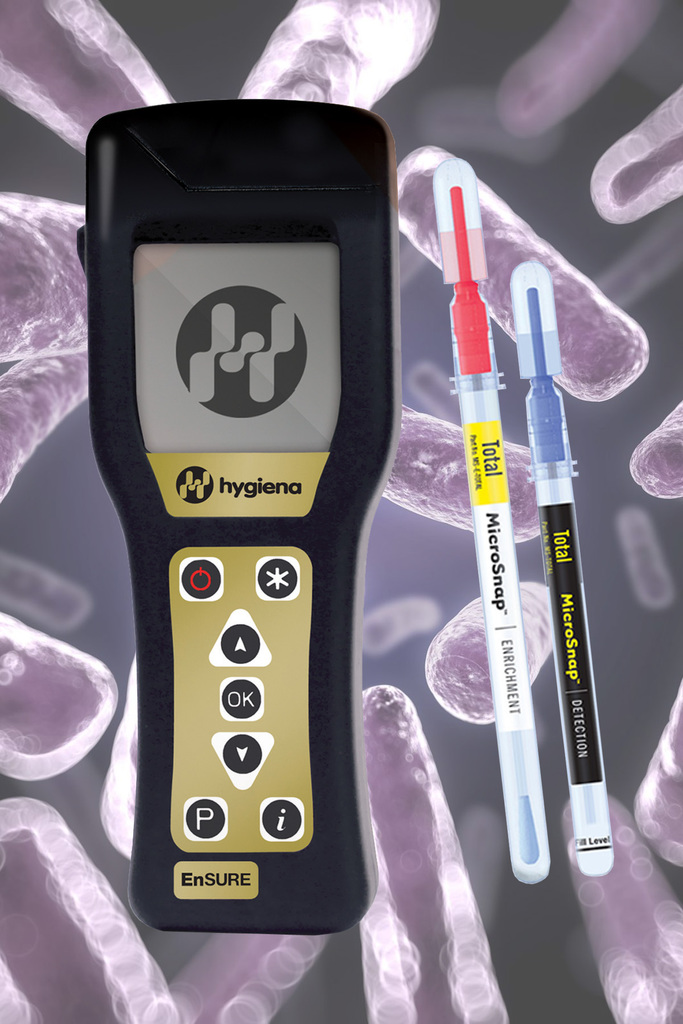

|
Chris Shaw
Editor |
| Home> | CATERING & FOOD HYGIENE | >Equipment & Services | >Rapid bacteria test |
Rapid bacteria test
20 January 2016
Environmental testing plays an important role in monitoring preventative measures to ensure quality and safety in manufacturing because finished product testing is of limited value, Hygiena International says.

Time to result is important for controlling and minimising risk and using on-site simple rapid test methods saves time and money, the company adds.
A case study showed that the implementation of MicroSnap streamlined the process and made microbial testing easier, more flexible and more efficient by reducing the time to result by >80 hours while cost per test has been reduced by around 40%.
MicroSnap is a rapid specific test that detects and enumerates bacteria giving results in the same shift of 7 hours using ATP bioluminescence in a novel formulation. An on-site factory trial was conducted to monitor cleanliness using the Hygiena EnSURE system, which was used for both the direct measurement of product residues (ATP using UltraSnap) and the measurement of bacteria using MicroSnap Total (AOAC certified). Results were compared to those from equivalent samples and tested by traditional plate count methods by a contract laboratory.
UltraSnap identified potential areas of improvement that would not be identified by a microbiology test alone. If the ATP test is negative, it is more than likely that no bacteria are present. MicroSnap gave more meaningful results than the traditional microbiology test results because it measured lower levels of contamination in the range 1 -10 CFU/swab and the time to result was much shorter.
- Quickly detects gluten in final rinse water samples
- Bacteria test certified
- Hospitals benefit from ATP hygiene monitoring
- Officers call in the hit swab
- Hygiene test is recipe for success
- Fast & accurate salmonella testing
- Test for salmonella
- A detection system with rapid results
- Improve hospital infection control
- Control norovirus outbreaks





















